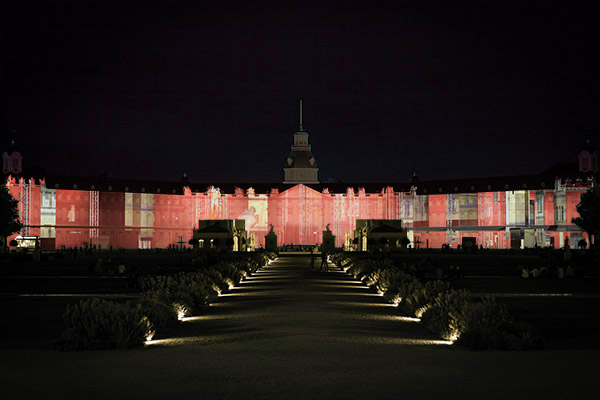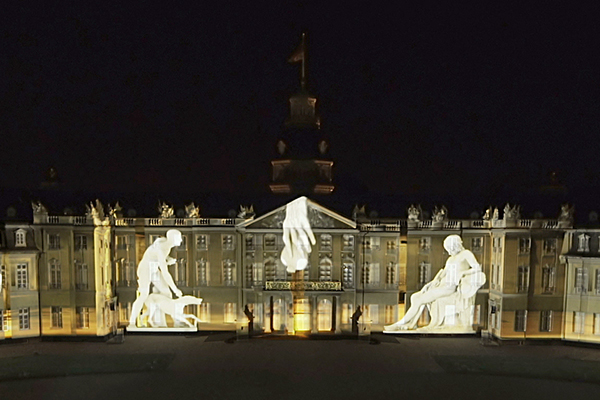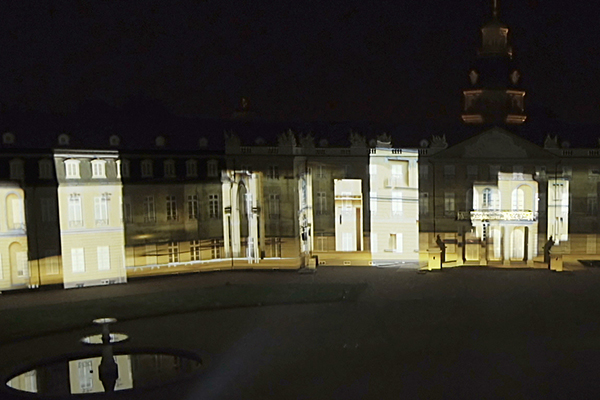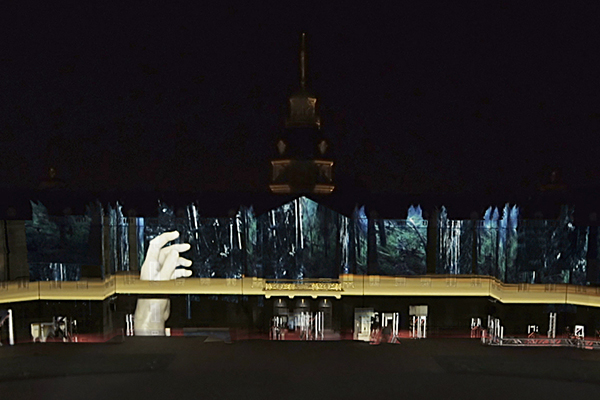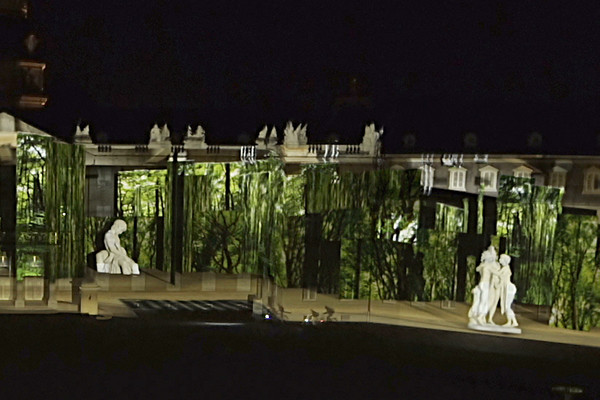"Baroque" as a metaphor for acting, staging and façade: on the Baroque façade of Karlsruhe Palace, which was itself rebuilt in 1966, Alexander Stublic allows a glimpse behind this façade(s) and thus brings the palace to perform itself. Sculptures from the Cour d´Honneur guide through an ensemble of seven scenes, showing an interplay of history and the present, of reality and its stage-like exaltation. Palace fragments play on revolving stages, the baroque topos of the mirror is understood as a two-sided symbol, on the one hand, of the passage of time and, on the other, of the artistic breach of illusion: Forest elements, figurative oversizes and metaphorical plays of light in dark blue and red reinforce references to the spiritual seriousness of the late Baroque Cultismo: in this respect, insights into an imagined understage illustrate the multi-layered nature of both the scenes depicted and the projection itself. The castle as real-spatial architecture recedes, the recognition of modern stage elements causes the chronological updating of both the audience and the audio-visual staging. The concluding dramaturgical change of direction clarifies the artistically intended location of the viewer in a medial interspace, an identical location in front of the projected metaphorical surface: the stage curtain thus closes in the back of the audience."
Text: Gunther Reisinger
